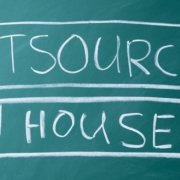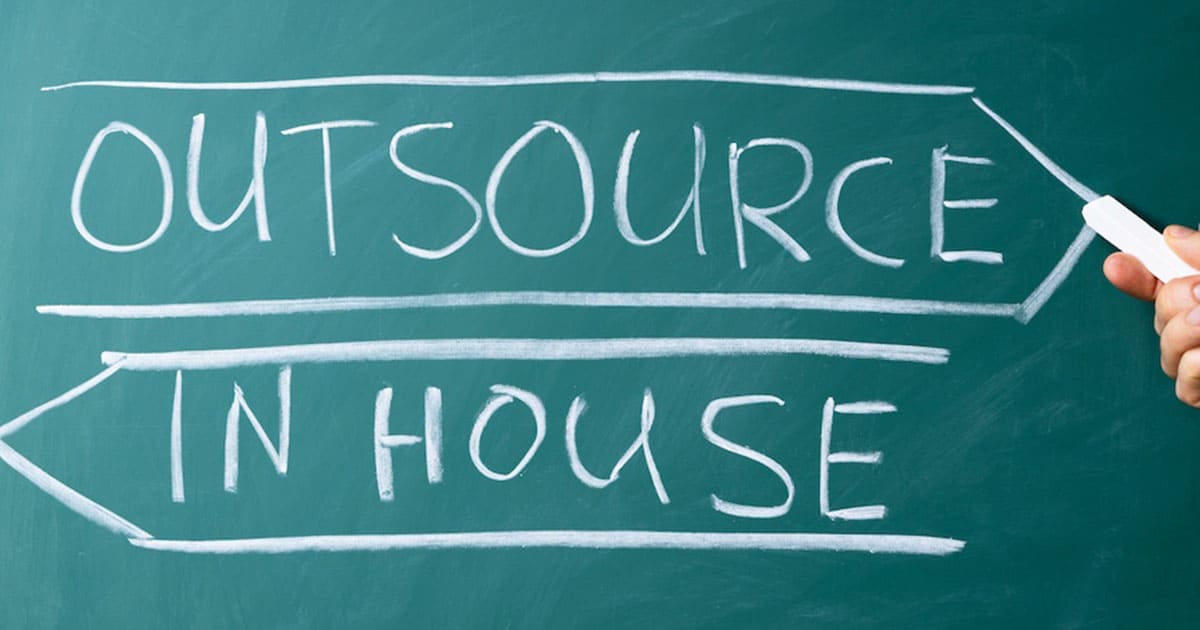Why Customer Experience Marketing in Senior Living Matters

All senior living communities sell the same thing—the same levels of care, the same amenities, and the same floor plans (more or less). The way to differentiate your community in this “sea of sameness” is by creating memorable experiences at key touchpoints for prospects, residents, and families.
This is known as customer experience marketing (CEM or CXM). Wondering where to begin? Don’t worry—we got you! Below, we share three areas to focus on:
● The Website Experience
● The Tour Experience
● The Resident Experience
Note: This post was inspired by a conversation that Debbie Howard (our CEO) had on her podcast with Jamison Gosselin, an executive-level marketing strategist with over two decades of senior living industry experience. In the podcast, Gosselin discussed interesting findings from an in-depth survey he conducted with thousands of adult children. We’re including quotes from the podcast. (Check out the full episode here.)
The Website Experience
Don’t make it hard for people to schedule a tour.
When we review senior living community websites, we often discover how hard it is to schedule a tour. Ideally, you should have a way for people to schedule a tour directly on your site. The online scheduler should be intuitive, easy to use, and provide email confirmation.
Howard says, “It’s funny. When I audit a senior living community’s website, I’m always interested—and a little bit scared—when I click on ‘schedule a tour.’ Because usually when you click ‘schedule a tour,’ guess what you don’t get to do? You don’t actually get to schedule the tour. There’s no date and time picker, which is what the person wants.”
People who schedule tours directly on community websites tend to be higher-intent conversions. So, not having a straightforward way to schedule a tour is a missed opportunity.
Don’t skimp on floor plans or photography.
Listen, it’s 2024, not 2004. We’ve come a LONG way in how we can show off floor plans. Take advantage of modern approaches and create a more engaging experience for site visitors.
Howard says, “People like the floor plans. Every time we do a heat map on a community’s site that has floor plans, the floor plans light up like Christmas. And yet so many communities are still using those silly, basic black and white architectural plans.”
The same is true with photography. Using stock images contributes to the “sea of sameness” feeling. People browsing various senior living websites often encounter the same stock images from one site to another. How are they supposed to keep your community straight?
Custom photography is one way. But don’t underestimate user-generated photos from your staff, residents, and their families.
Don’t avoid the pricing discussion.
Senior living is expensive, full stop. We know it. You know it. Prospects know it. The question is, how expensive? And can it work for the prospect’s budget? That’s what people want to know when they’re looking at senior living websites and hunting for pricing information.
Listen, we get why communities are hesitant about sharing pricing online. Slapping prices on your website might scare people away before they understand financing resources, like bridge loans or the Veterans Aid & Attendance benefit.
However, not sharing pricing information doesn’t create a good website experience for visitors who crave that info. Instead of hiding from it, perhaps try leaning into it.
Higher education is an excellent model to follow. We don’t have to tell you that college tuition is expensive. We know it. You know it. Prospective students and their families know it. (Sound familiar?)
But colleges lean into the pricing discussion. Colleges are transparent about costs because helping people self-qualify helps everyone. But they don’t just list prices and leave it at that. They provide context. They demonstrate the value. They’re quick to point out information about financing and financial aid. (Here’s a great example.)
Think about how you might approach pricing if you leaned into it instead of turning away:
● You could discuss the ranges and what influences those ranges (like the size of the apartment home and its location).
● You could discuss how families successfully finance senior living. Include information and downloads that discuss long-term care insurance, how people can use life insurance policies to fund care, the Veterans Aid & Attendance benefit, etc.
● You could include testimonials from residents and their families who “found a way” and discovered it was much more doable than they initially thought.
Gosselin says context is essential. “Some operators are doing it pretty well. Some are not,” he explains. “And I think we do need to be more transparent about not only what it is that we charge people in terms of amounts, but what does that mean in terms of the services and the amenities and the care and the apartment that people are getting as well.”
If you don’t include pricing info (or you do, but it’s vague), people might leave your site feeling frustrated, which isn’t the experience you want them to have.
The Tour Experience
Yay! You’ve gotten a prospect to convert into the almighty tour. If you work in marketing, you might think your job is done. If you work in sales, you might think you could give tours in your sleep by now.
Both ways of thinking are problematic.
Remember, the tour allows you to differentiate your community from the “sea of sameness.” How you act, how you connect, how you listen—all those things will have a significant impact on the person experiencing the tour. Sales directors must always bring their A-game.
Gosselin says, “How are you defining that initial experience on the tour? What’s your tour path? How do you involve residents and other team members in the community as part of the tour, and how do you just stand out . . . how does the experience of the tour allow you to differentiate yourself from all the other tours that they’re taking?”
Sales directors should:
✔ Review all discovery notes about the prospect and their family. What’s the backstory? What activities are they interested in? Etc.
✔ Alert the front desk that someone is coming for a tour. Share the name so the front desk person can greet the person warmly.
✔ Pay attention to non-verbal gestures. The most effective sales directors know how to “read the room” and adjust accordingly. If the prospect is subdued and quiet, don’t go overboard with sunshine and rainbows. Meet the prospects where they are and build from there.
✔ Never be afraid to deviate. You might have a typical tour routine. For example, maybe you always point out the hair salon. Well, if you’re giving a tour to a bald man, maybe skip the salon and bring him to where folks gather to play chess or show him where he can borrow books or DVDs. You get the idea.
Need inspiration? Check out our on-demand “Red Carpet Tours” webinar, which discusses planning and executing the perfect tour. It’s free.
Keep in mind that pre- and post-tour tasks matter, too.
For example, when was the last time you audited the communication workflow that goes out after someone books a tour? What does the confirmation email say? Is it personal? How about the reminder emails? Are they generic, canned emails that simply say, “Reminder, you have a tour on May 12”? Or do they sound personal?
Which email below would get you excited?
Option 1
Dear Anita,
Reminder that you have a tour scheduled with ABC Community on May 12 at 2:00 p.m.
We look forward to seeing you then.
Best,
(Community Sales Director)
Option 2
Dear Anita,
We can’t wait to meet you on May 12 at 2:00 p.m. and show you around our vibrant community.
The flowers in our garden are in full bloom (you can take some clippings home if you like), and I know some of the “girls” in our community meet for bridge at 3:00. (You had mentioned that’s one of your favorite activities, so I want to make sure I introduce you.)
Looking forward to seeing you!
Best,
(Community Sales Director)
Your post-tour communications should be equally warm and personal—whether it’s an email, a phone call, a home visit, or a combination of all of the above. Again, think of it as creating a rich customer experience rather than simply checking off a box.
The Resident Experience
This is a hot-button issue for all of us at Senior Living SMART. Again, you might think the marketing and sales teams are off the hook once a deposit has been placed. You’ve done your job of capturing a prospect and turning that prospect into a resident.
But here’s the thing: That fantastic experience you created on the website and during the tour needs to extend through the move-in—and beyond.
Post-deposit experience
Anticipating everything a person needs before moving in is a great way to create a positive post-deposit experience.
● Do they need movers? Make introductions to your list of trusted vendors.
● Do they need help downsizing? Provide tip sheets or services that can help.
● Do they know where to go the day they move in? Who will be greeting them? Where should people park? Etc.
Howard says this is where the marketing team can step in and help. “We can leverage marketing automation to deliver a welcome letter,” she explains, “or automatically send packing tips and downsizing tips and moving resources and what to expect on day one.”
Move-in experience
What’s your community’s plan for making it a wonderful experience? Howard says it’s important to have a plan for the first 30 days—and that it could make sense for marketing to pick up the slack once again.
“We know how critical the first 30 days are,” she says. “Every week, you can deliver a little delight and surprise to a new resident. It could be something simple, like passes to the dining room for your family members or a gift card for the salon. It’s not that difficult to deliver flowers on day 30 and celebrate that first month. Because guess what? If you create raving fans, they’re going to leave great reviews, and they’re going to recommend your community to their friends . . . I feel like there’s a whole missed opportunity post-sale and really continuing those positive customer experiences.”
Move-out experience
At some point, residents—even happy ones—will leave. They might move into a higher level of care, move out, or pass away.
You might be wondering what sort of “customer” experience you’re supposed to create for someone who’s no longer there. But remember, the past resident still has family and friends. What’s the experience been like for them?
⮚ Do you make it easy for family members to gather all their loved one’s belongings?
⮚ Do you simplify the process of paying any outstanding bills and finalizing paperwork?
⮚ Do you have a workflow that allows you to stay in touch with family members? Perhaps a newsletter or publication designed specifically for family members of past residents.
You’d hate for the great experience a resident had to be sullied by a sloppy or impersonal move-out experience that the adult child had to endure, right?
Remember, family members of past residents can still make excellent referrals.
Gosselin says, “We are not like your typical business-to-consumer industry where it’s very transactional . . . And the other side of it is because we’re serving people for a longer time, it’s not like going into a hotel room and checking out of a hotel room. You hopefully will move in, you’ll have a great experience, and then you’ll move on, pass away, move to a higher level of care, whatever it might be. But I would say that I think we as an industry need to think more creatively based on how our business operates. And I think we need to do a better job at that.”
Ready to elevate your customer experience marketing?
We can help! We have compelling and creative campaigns and programs that we can customize for your community so that you can wow prospects, residents, and their families at every touchpoint. Get in touch, and let’s discuss how we can help.



















